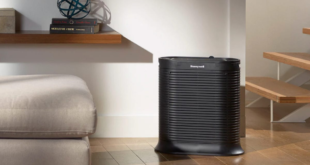Dragon Quest III HD-2D Remake is Square Enix’s grand endeavor to revive a classic RPG that originally came out 36 years ago on the NES. The result is a delightful modernization, but some esoteric elements of the original have been preserved and best understood sooner than later. Here are five tips to keep in mind when starting Dragon Quest III HD-2D Remake.
Most of these tips explain the idiosyncracies in the game’s combat and leveling system, but there’s also some general advice to set yourself up for success. Like many other RPGs, Dragon Quest III HD-2D Remake focuses on building up a small party of adventurers to get strong enough to take on tougher foes — it’s just the way the game goes about it that takes a little understanding.
Lastly, the original game may be over three decades old, but it’s got some complex mechanics and random chance that can throw a wrench in your plans if you don’t quite grasp what it’s doing. Learn these five tips quickly so you can go back to focusing on the lush graphics and gorgeous soundtrack (done by the Tokyo Philharmonic Orchestra) that make this game a nostalgic treat with plenty of challenge.
Read more: Celebrate the Holidays With Final Fantasy and More on Apple Arcade
What is Dragon Quest III HD-2D Remake?
Dragon Quest III HD-2D Remake revives the classic Dragon Quest III with all-new graphics, a new orchestral arrangement of the original’s music, a new class and more. The game is available for PC, PS5, Xbox Series X/S and Nintendo Switch for $60.
The character creator menu, choosing between character “voice” options that affect their Personality.
How to create characters in Dragon Quest III HD-2D Remake
After starting the game, your hero will be encouraged to scrounge up a party of your own. On the western side of the starting town of Aliahan, you can find Patty’s Party Planning — a tavern that allows you to swap companions in and out to form a four-person party.
The first thing to consider is class. Beginners would be wise to stick with the traditional options of Warrior, Cleric and Mage, which offer a tanky defense, healing and status magic and group-targeting spells, respectively. You can pick up a trio of pre-made characters in these classes from Patty and just go about your day. Otherwise, head upstairs and talk to the person at the desk to create your new adventurers from scratch.
More adventurous party-makers can opt for other classes, like the Martial Artist and Monster Wrangler for single-target and group damage, respectively. Merchant and Thief are more specialty picks with abilities usable out of battle, while Gadabout is a healing wildcard. (The last class, the fighter-magic user hybrid Sage, isn’t an option until later in the game.)
Pro tip: halfway through the game, you’ll be able to change your party members’ class. The price is steep — the character goes all the way back to level 1 and halves their stats, but they’ll retain all their spells and abilities. Don’t feel stuck with the class you picked at the start.
You’ll also be able to pick your character’s starting stats. Just like in the original, Dragon Quest III HD-2D Remake uses expendable seeds (one for each stat category) to raise characters’ attributes, although it’s random whether they’re increased by 1, 2 or 3. You’ll get a handful of seeds to spend however you see fit for your character’s starting stats — but it bears so little impact on their growth that you’re fine letting the game auto-select.
With the big choices out of the way, you can focus on a range of cosmetic looks, but the last option — the character’s voice — influences their baseline personality. Personality affects which stats are increased fastest when characters level up, and it’s absolutely crucial to check your party’s personalities in the in-game menu appendices (Misc > Traveler’s Tips) to understand which areas they’ll grow faster in. Not long into the game, you’ll get one-time-use books and wearable accessories that change personalities, so don’t sweat if your character doesn’t have the best stat growth right now.
Master how combat works in Dragon Quest HD-2D Remake
Another way the game is different than other RPGs is the combat, which was a little less strange when it debuted in the original than compared to how conventions have evolved to today’s games.
First, understand how the “tactics” system works. When you roll into your first battle, you’ll notice that all your characters attack on their own. You can change this in the “tactics” menu, directing your party members to operate autonomously with guidelines like all-out attacking, defensive play, focus on healing, or don’t use mana. Or you can give each one direct orders, which is honestly recommended — your party members aren’t the most efficient fighters.
There’s still some randomness in their targeting, however, due to the game’s other big combat quirk. Enemies are bundled together in “groups” that party members have to choose between when attacking or casting spells. For instance, if there are three slimes and two ravens, you can tell your party member to target one group or the other, but it’s up in the air which specific enemies they hit. This results in some inefficiency as your party can spread its damage out too thin rather than focus a foe down to elimination, but the added randomness is just part of the game’s charm.
Pro tip: as your party levels up, they’ll get spells and weapons with area-of-attack effects. Most of these will target groups, like the fire spell Sizz or the weapon Thorn Whip. Look out for the Boomerang-type weapons, which attack every enemy on the screen. Give those to your highest-attack fighters.
Annoyingly, later on, monsters of the same type might be split apart in an enemy lineup, meaning you’ll have to target them separately. Those group-targeting spells will consider each foe its own “group.”
Look in every pot, drawer and pouch. Explore every offshoot for chests
Most RPGs hide items for players to find in their own signature box or barrel, and Dragon Quest III HD-2D Remake is no exception. When in towns and dungeons, keep a lookout for gray pots, wooden barrels and yellow pouches hanging on walls, as they’ll often have gold or even rare and pricey items. Just walk up to them and tap the right button when the “inspect” prompt comes up.
You’ll find items in the overland too; they’ll sparkle to clue you in. The best rewards are found in the more remote ends of the map, so if you see an odd peninsula, chances are it’ll have a pretty good item tucked away at the end.
This applies in dungeons too: if you see an offshoot or tunnel that doesn’t lead deeper in, it will pretty reliably have a treasure chest or item in a pot that makes it worth the adventure. Predictably, this makes them harder to ignore and more dangerous. Be cautious with your loot-seeking.
Search every corner for mini medals and turn them in at every gift level
While searching for aforementioned items, you’ll often run across mini medals — a collectible currency in the game you can exchange for items. To find the mini medal shop, travel to the eastern part of the starting town of Aliahan and go down the well, where you’ll easily find the underground medal retailer.
As the medals are more like collectibles, the merchant inside will simply reward you once you collect enough to hit certain thresholds. For instance, you’ll get items at 2, 5, 8, 12 and 15 medals, and the increments between reward levels increase from there.
More often than not, these items are game-changers or pricey equipment you get essentially for free. One (the 8-medal reward, if I remember correctly) is the Boomerang, which attacks all enemies at once, giving players a huge advantage at a crucial part of the early game when AoE spells and weapons are limited.
Run, don’t walk, back to Aliahan once you hit each medal threshold. It’s worth the use of a chimera wing item to zip back and forth (and soon enough, you’ll get a spell that will do this for free).
Time your level-ups for when you most need MP
As expected for an RPG, the first few levels each character earns require minimal experience points (XP), but those thresholds quickly grow bigger and bigger as party members level up. When a character does “ping” a level, they’ll have their hit points and magic points refreshed to full (or beyond, as their capacity will likely get increased with stat gains). This is a crucial boon that can save your life in a long dungeon.
Depending on your classes, some party members will have different healing abilities — eventually including your main Hero character. Assuming you have a Claric, they might be on healing duty to keep the party alive as monsters and traps whittle down health. Topping off their health will also diminish your Cleric’s MP. Similarly, leaning on your Mage for group-targeting spells drains their respective MP.
That’s where keeping track of how much XP your party members each need to level up comes in handy. Deep in a dungeon, refreshing a magic user’s MP can save your ailing party. If you’re monitoring them and a character is about to gain a level, use their MP to top up the rest of the party or use a high-cost spell in the next battle. Remember, spending MP on damage spells to kill enemies faster saves HP.
 synnbiob
synnbiob


